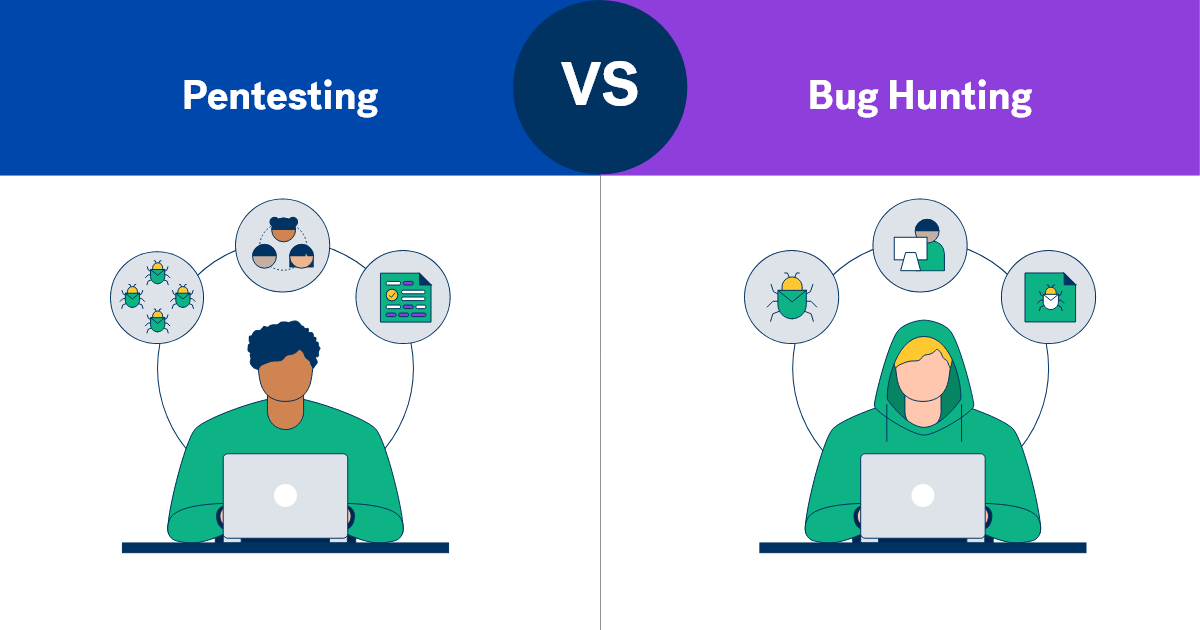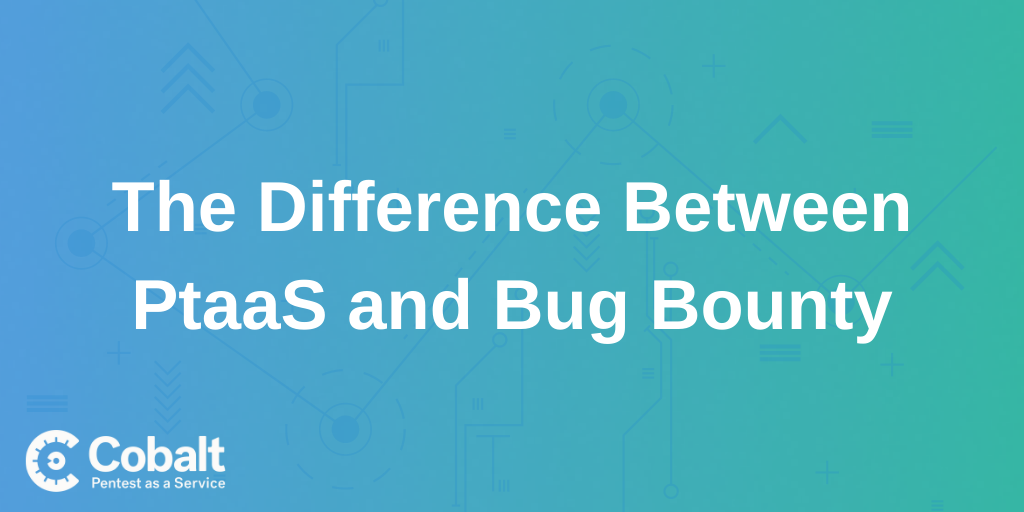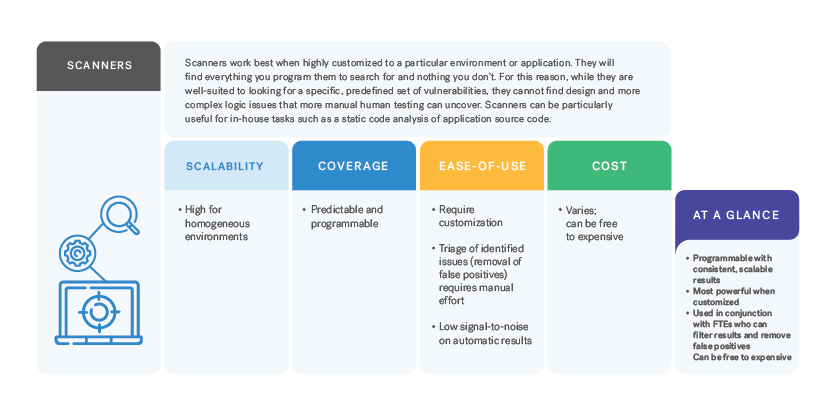Penetration testing (pentesting) and bug bounty programs (bug bounties) are a common part of companies' cybersecurity strategies. While they both share the goal of finding weak spots in a company’s security posture, they serve different purposes and are executed in different ways.
Pentesting is an exercise where security experts are hired to execute cyberattacks on an application, computer system, or network to find vulnerabilities and security weaknesses.
A bug bounty program is a crowdsourced initiative that relies on individuals to find and report security flaws or vulnerabilities in a company’s software. The organization offers rewards to those who find vulnerabilities successfully.
In this article, we’ll explore the differences between pentesting and bug bounty programs to clarify which program makes more sense for your organization, depending on its needs.
What are the differences between pentesting and bug bounties?
There are several notable differences between external or third-party pentesting and bug bounty programs which can be broken down into the following areas:
- Who does the work
- Primary objectives
- Duration of exercise
- Cost
- Deliverables
Who does the work
Pentesting typically involves an organization hiring a pentesting company or outside consultant to perform the job. The people who conduct the tests are called pentesters, and are typically experienced security experts who use the same tools, techniques, and procedures to conduct their testing that real attackers would. Pentesting is usually conducted by a team of pentesters who complement each other’s skills to ensure a comprehensive assessment. The client has a direct relationship with the pentesting team, and both parties typically collaborate to execute the scope of the engagement.
Bug bounty programs rely on individual bug bounty hunters, who frequently work by themselves. In most cases, bug bounty companies administer the bug bounty program on behalf of companies so that they don’t have to set up, recruit for, and manage their own bug bounty program, but that’s not always the case. Larger companies with the resources to do so run their own program. Even smaller companies may try to run one themselves to lower costs. The programs can be public or private, and participation is by invitation in the latter cases. It’s important to note that the bounty hunters have the discretion to accept the invitation or decline it. They work as freelancers, and there’s little to no direct interaction between them and the organization that provides the bounty.
Primary objectives
Pentests usually have a specific scope that targets a particular system or area of the organization, and can also cover areas such as APIs, mobile apps, AI and LLM applications, cloud configs, and both internal and external networks. The scope of the engagement is agreed upon before the testing begins, which helps the client to benefit from the ability to test systems or software that they believe need to be bulletproof. This targeted approach allows the organization to find security weaknesses in their systems, applications, or networks that threat actors could exploit, evaluate the effectiveness of the company’s existing security controls and defenses, or assess the company’s readiness to detect and respond to security breaches. For companies in regulated industries, pentests are used to fulfill regulatory compliance requirements such as those found in PCI DSS and HIPAA.
Bug bounties, on the other hand, have a much broader scope. They focus on broader security testing of a company’s applications so that they can find and eliminate vulnerabilities that could make them susceptible to cyberattacks. You can think of it as covering more surface area without going into depth. The bounty hunters are not given specific instructions on what to look for or what to test; bug bounty programs aim to try to find as many vulnerabilities ‘in the wild’ as possible.
Duration of exercise
There is a huge difference between the duration of a pentest versus that of a bug bounty program. Pentests usually last just a few days or weeks and may be conducted several times a year, while bug bounty programs are less constrained in their duration and can run continuously for months or years.
Cost
Pentests have a fixed cost, as the scope of a pentesting exercise is determined in advance. This makes budgeting for pentesting exercises straightforward. However, they generally cost more, as pentesters have a lot of security expertise and are in high demand. Organizations have to pay the cost of pentesting regardless of the number of vulnerabilities found.
Bug bounty programs have two separate costs: the cost of setting up and managing the program and the cost of valid bug submissions. The amount of money bug bounty hunters receive is based on the validity and severity of the vulnerabilities they discover. The total cost of a bug bounty program is very unpredictable because it’s impossible to predict the number and severity of vulnerabilities that are reported and accepted by the organization. This variability can lead to challenging situations for organizations that receive an unexpectedly large number of findings.
Deliverables
Pentesters deliver a detailed report of all the vulnerabilities discovered, including the potential impact of a successful attack, the evidence supporting the findings, and proper remediation strategies. The reports are comprehensive and help companies understand not only their vulnerabilities but also the steps they can take to address their security deficiencies. They also conduct ongoing communications with the client, which provide numerous benefits, including the ability to resolve critical vulnerabilities quickly and to ensure enhanced collaboration between both parties. Once all the vulnerabilities that are discovered have been remediated, the pentesters will retest the vulnerable applications or systems to confirm that the remediation work was successful.
The results of a bug bounty program can vary drastically, depending on the individual bounty hunter’s approach and the program's structure. Some reports are extremely detailed, while others can be severely lacking and require additional work to validate and prioritize the findings.
The Pros and Cons of Pentesting and Bug Bounty Programs
Now that we’ve seen some of the significant differences between pentesting and bug bounty programs let’s explore the pros and cons of each individually.
Pentesting Pros
- One of the primary advantages of pentesting is that professional pentesters employ a structured methodology to ensure that they are as comprehensive as possible in their testing. This systematic approach often uncovers vulnerabilities that less rigorous methods or automated scanning might overlook.
- Another major benefit of pentesting is the unique expertise, knowledge and experience that pentesters bring to the challenge. They often think like real-world attackers in their attempts to identify potential security gaps. This expertise is irreplaceable for understanding complex vulnerabilities and how they might impact an organization.
- Ongoing communication between the pentesting organization and the client helps enhance the collaboration between both parties and ensures that critical vulnerabilities are immediately addressed. It also helps ensure that pentesters focus on the areas that benefit the business, and any issues in pre-production or staging environments can be addressed quickly
- Pentesters provide their clients with comprehensive reports that not only identify vulnerabilities but also offer concrete recommendations for remediation. This level of detail is crucial for organizations that want to prioritize their security efforts and allocate resources effectively.
- Once the remediation work has been completed, pentesters will verify that the fix was successful by retesting the applications or systems.
- Pentesting also helps ensure that compliance requirements are met. Regulatory standards such as PCI DSS and HIPAA require regular security assessments. The reports generated by pentesting activity serve as evidence of due diligence in security practices, which can be beneficial during audits.
Pentesting Cons
- One of the traditional limitations of pentesting is that it only provides a point-in-time snapshot of a company’s security. The dynamic nature of IT environments means new vulnerabilities can emerge shortly after a test is completed and may not be discovered until the next test. To combat this, some organizations implement continuous pentesting.
- Professional pentesting service costs vary depending on the size of the business or network, the number of applications, and the scope of the test. A comprehensive assessment may require a larger investment, but this can be mitigated by more clearly defining the scope of the project. How the service is delivered will also impact cost. Traditional consultancies may be more expensive when compared to Pentest-as-a-Service (PtaaS) models.
- Some organizations might be lulled into thinking that they're fully secure after a successful pentest, and fail to pay attention to the need for ongoing security measures. It’s important to note that pentesting is one component of a comprehensive security strategy, and complements other efforts to help secure your organization.
Bug Bounty Program Pros
- Among the biggest advantages of bug bounty programs is that they perform security and quality testing on a continual basis, which allows for ongoing vulnerability discovery. This supports the security needs of dynamic organizations and helps ensure that vulnerabilities that escape the secure software development lifecycle process are caught.
- Bug bounties' crowdsourced, global nature enables a diverse set of perspectives. Having bounty hunters with varied backgrounds and skill sets trying to find weaknesses in your systems can lead to the discovery of unusual vulnerabilities that internal teams or traditional security testing methods might overlook.
- Bug bounty programs can be cost-effective because of their pay-for-results model. This model is attractive for cost-conscious organizations, as they only have to pay for valid results.
- Running a bug bounty program can improve the organization's standing from a reputational standpoint. It reflects a publicly visible commitment to security and transparency, which can greatly enhance trust among customers, partners, and shareholders if the company is publicly traded.
Bug Bounty Program Cons
- One of the most significant challenges with bug bounty programs is that the results are unpredictable, to the point that they are often described as being “hit or miss.” Since there’s no steady relationship between the bug bounty hunters and the organization or the bug bounty company that administers the program, it’s impossible to know what the volume and quality of submissions will be. This makes it very difficult for organizations to rely solely on bug bounties for comprehensive security testing.
- A lot of resources go into managing a bug bounty program successfully. The time and effort associated with triaging and ensuring the validity of submissions, conducting communications with submitters, and managing the bounty payouts is significant. Unless an organization has ample resources to dedicate to the effort, it can be challenging in the best-case scenario, and completely overwhelming otherwise.
- Misaligned incentives can pose a significant issue. Bug hunters may focus on low-hanging fruit that is easily accessible to maximize their income and potentially miss more complex, more critical vulnerabilities as a result.
- Bug bounty programs can also lead to a false sense of security. It’s difficult for an organization to ascertain if fewer submissions are a result of their highly secure systems or if they reflect the fact that security researchers didn’t find their program attractive enough to participate in.
- The lack of a predefined scope around bug bounty programs can also lead to a budgeting nightmare. If an organization unexpectedly receives a large number of valid vulnerability submissions, it will have to make the payouts, which may cause financial challenges.
- Another major issue with bug bounties is that while they provide information about the organization’s vulnerabilities, prioritizing the fixes still largely falls on the shoulders of the organization’s security team. This problem is exacerbated by the dynamic, ongoing nature of the vulnerability findings, which make it challenging to allocate resources efficiently and effectively.
Pentesting or bug bounty - which do you choose?
When choosing between pentesting or bug bounty programs, your primary goal should inform your choice. Do you want to conduct a thorough and expert-driven assessment of your security posture or focus on a generic inspection of your overall attack surface? This factor should be your number one priority, as while the other factors such as cost, quality of the results, the expertise of the team, and the resources required to support the effort are all significant, they are moot if you’re not accomplishing your main objective.
When it comes to ensuring the overall security of your organization, there is a clear choice - pentesting. Pentests are more comprehensive, methodical, and are aimed at finding and closing the gaps in your security. The more collaborative aspect of pentesting helps ensure that the pentests are focused on the security aspects that your organization prioritizes, and that critical vulnerabilities are addressed promptly.
Once you’ve dialed in your pentesting controls, a bug bounty is a great way to augment your existing security stack. Their broad scope helps you to secure more of your attack surface, but it’s also for this reason that they should serve as a secondary mechanism for testing your security, since they don’t prioritize the applications and systems that you value the most in the way that pentesting does.
Ready to strengthen your security with expert-driven pentesting? Book a demo today!








